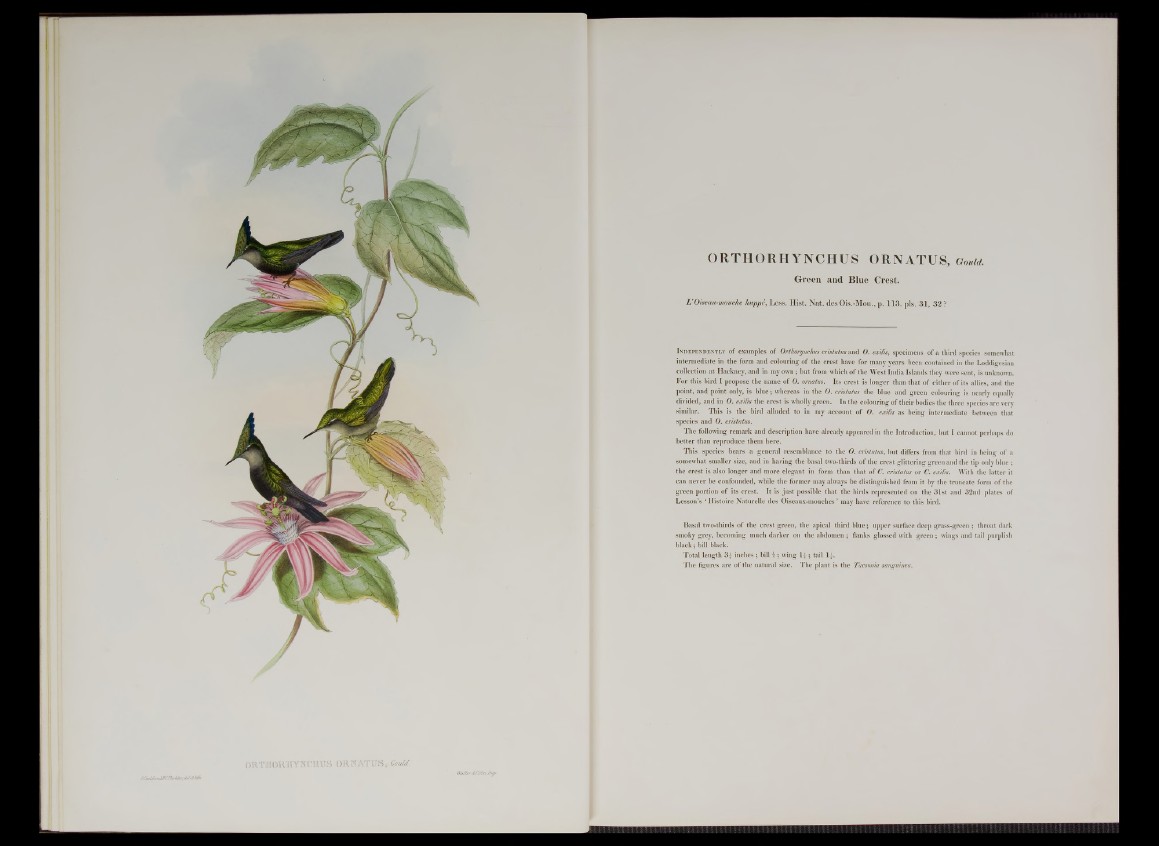
QRTHOi mnsrciiixs o u r a t u s , Gou/d.
JCauUanJHCRirJrlrJJdlit}’
ORTHORHYNCHUS ORNATUS, GoM.
Green and Blue Crest.
L'Oiseau-mouche hvppe, Less. Hist. Nat. desOis.-Mou., p. 113. pis. 31, 3 2 ?
Independently of examples of Orthorynchus cristatus and 0 . exilis, specimens of a third species somewhat
intermediate in the form and colouring of the crest have for many years been contained in the Loddigesian
collection at Hackney, and in my own; but from which of the West India Islands they were sent, is unknown.
For this bird I propose the name of 0. ornatus. Its crest is longer than that of either of its allies, and the
point, and point only, is blue; whereas in the 0 . cristatus the blue and green colouring is nearly equally
divided, and in 0. exilis the crest is wholly green. In the colouring of their bodies the three species are very
similar. This is the bird alluded to in my account of 0 . eanlis as being intermediate between that
species and 0 . cristatus.
The following remark and description have already appeared in the Introduction, but I cannot perhaps do
better than reproduce them here.
This species bears a general resemblance to the 0. cristatus, but differs from that bird in being of a
somewhat smaller size, and in having the basal two-thirds of the crest glittering green and the tip only blue ;
the crest is also longer and more elegant in form than that of C. cristatus or C. exilis. With the latter it
can never be confounded, while the former may always be distinguished from it by the truncate form of the
green portion of its crest. It is just possible that the birds represented on the 31st and 32nd plates of
Lesson’s ‘ Histoire Naturelle des Oiseaux-mouches ’ may have reference to this bird.
Basal two-thirds of the crest green, the apical third blue; upper surface deep grass-green ; throat dark
smoky grey, becoming much darker on the abdomen ; flanks glossed with green; wings and tail purplish
black; bill black.
Total length 3 f inches ; bill £ ; wing I f ; tail If.
The figures are of the natural size. The plant is the Tacsonia sangumea.